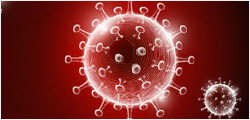Biocatalytic cells displaying functional enzymes on their surface have the ability to catalyze the degradation of persistent micropollutants with high enzyme accessibility and stability. However, the high migration and limited processing capability of suspended biocatalytic cells remain major challenges for practical applications in water treatment. In this study, we fabricated biocatalytic membranes (BCMs) by immobilizing biocatalytic cells, i.e., Baker's yeast with cell surface display laccase (SDL), on microporous membranes via inkjet printing and chemical crosslinking. The incorporation of SDL biocatalytic cells on the surface of the membranes was confirmed by microscopy,?elemental analysis, and enzyme ass... More
Biocatalytic cells displaying functional enzymes on their surface have the ability to catalyze the degradation of persistent micropollutants with high enzyme accessibility and stability. However, the high migration and limited processing capability of suspended biocatalytic cells remain major challenges for practical applications in water treatment. In this study, we fabricated biocatalytic membranes (BCMs) by immobilizing biocatalytic cells, i.e., Baker's yeast with cell surface display laccase (SDL), on microporous membranes via inkjet printing and chemical crosslinking. The incorporation of SDL biocatalytic cells on the surface of the membranes was confirmed by microscopy,?elemental analysis, and enzyme assay tests. Moreover, it was demonstrated that the number of SDL cells incorporated and therefore, the?enzyme activity?of the BCMs, could be systematically controlled by altering the printing parameters. The viability, regeneration, and high storage stability of SDL cells were maintained in the BCM platform. Furthermore, the BCMs could be reused with high stability as they retained 76% of their initial activity after ten repeated reaction cycles. In comparison, the activity of freely-suspended SDL cells declined to 42% of their initial activity after ten reaction cycles. Finally, the effectiveness of BCMs in treating emerging?contaminants?was confirmed using?bisphenol A?and acetaminophen as substrates in proof-of-concept experiments. The results of this study establish that BCMs can address concerns related to the utilization of suspended biocatalytic cells by fixing them on a microporous substrate. With further study and optimization, BCMs have the potential to be incorporated into membrane-based separation and pollutant degradation processes.



































